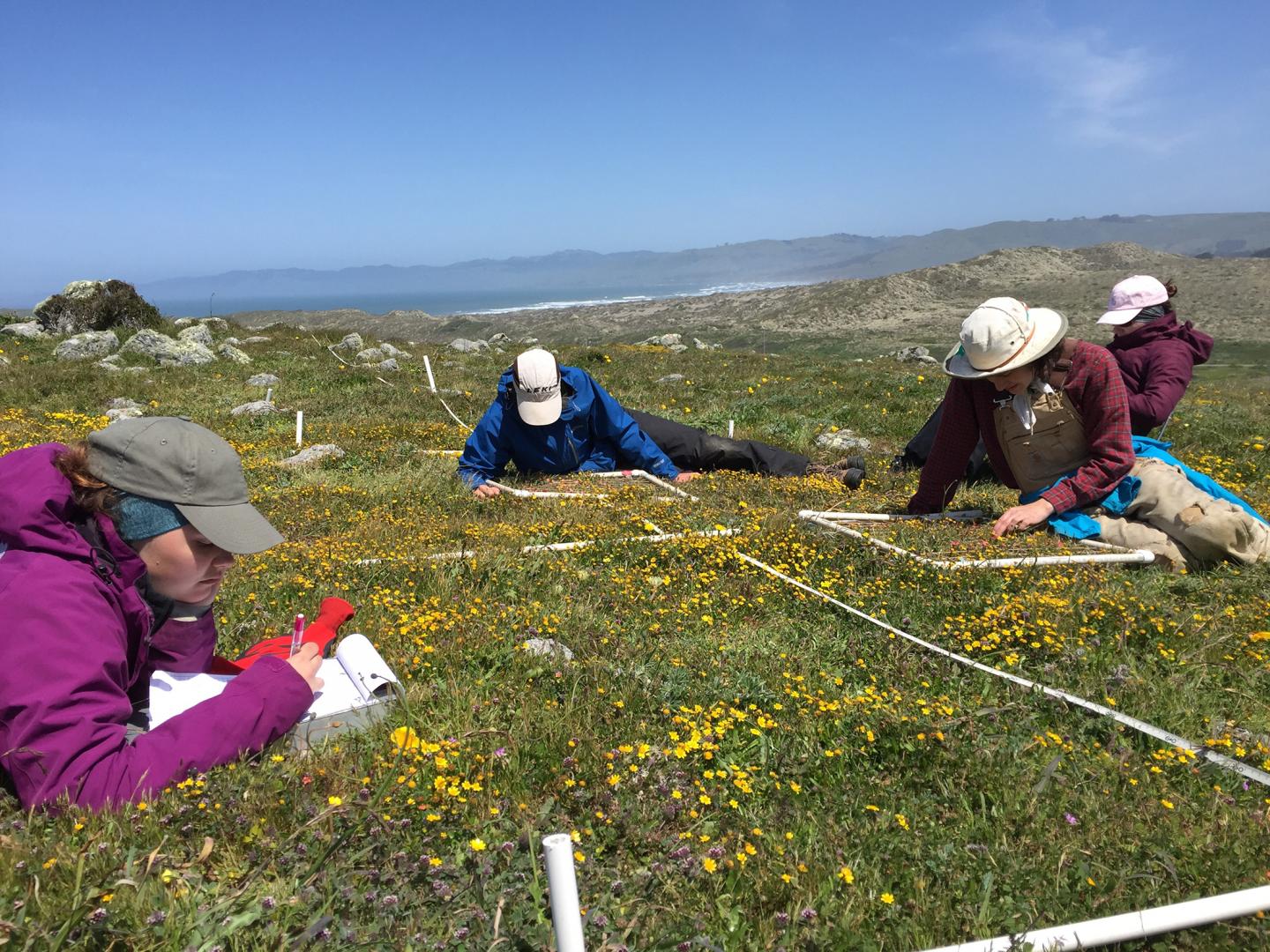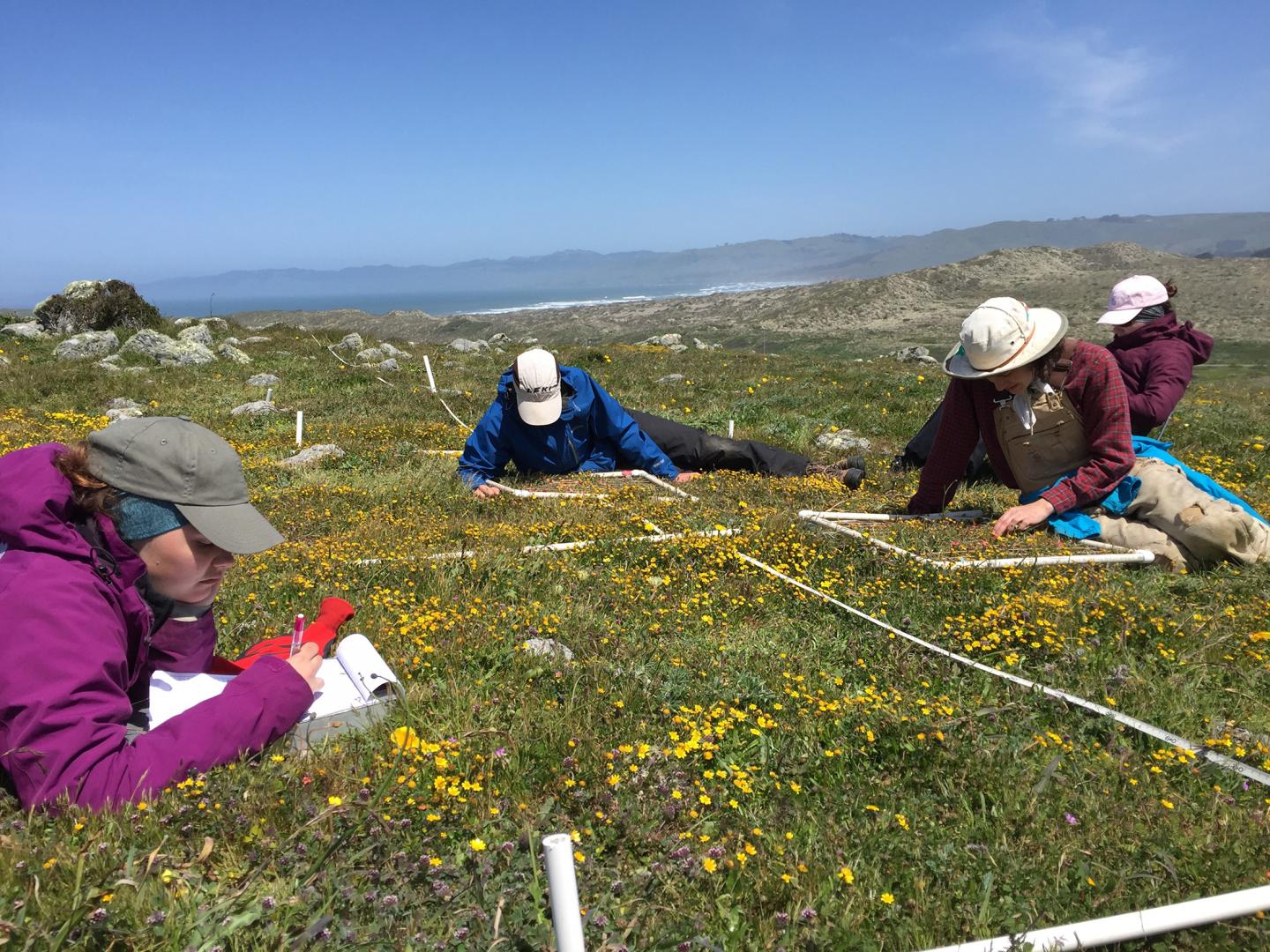
Credit: Courtesy of Michigan State University
EAST LANSING, Mich. – Some people travel to northern California for wine. However, Maren Friesen, Michigan State University plant biologist, treks to the Golden State for clover.
The lessons of plant diversity and competition learned from a clover patch, which are featured in a special issue of the Journal of Ecology, can potentially unlock secrets on plant interactions around the globe.
"There's something quite special in how clover assemble such diverse communities. They compete, yet they have many traits in common due to shared ancestry," Friesen said. "Native Californian Trifolium represents a special system for understanding competitive interactions among close relatives. We'd like to understand their processes of diversity before they're all gone."
These special patches of clover are located on a handful of hills in Northern California. Friesen's patch was in the Bodega Marine Lab reserve, run by the University of California, Davis, which harbors a diverse community of clovers.
Friesen has been working with Sharon Strauss at UC Davis since 2014 to unlock the secret to their sociability. Friesen admits that the experiment began as a bit of a genome-wide "fishing trip." The team, whose lead author was Alan Bowsher, MSU postdoctoral researcher, collected samples from Trifolium fucatum growing with different competitors and sifted through thousands of genes — 26,000 of them, to be precise.
The trip, though, yielded a trophy catch. A single gene, UDP-glucose flavonoid 3-O-glucosyltransferase, made the expedition worthwhile. And just like all trophy fish, the catch was documented with a photo — actually a graph.
"It's a very intriguing 'fish,' part of a very important signaling pathway," Friesen said. "It's also a flavonoid, which is involved in many plant interactions, including those involved with nitrogen fixing bacteria. The gene's levels rise when the plants compete with other species of plants and decrease when surrounded by members of the same plants."
It plays a key role in the relationship plants form with bacteria that fix nitrogen, grabbing the critical element from the air and soil and accumulating it in root nodules — essentially, fertilizing themselves. If scientists could identify the genes and mechanisms involved in this process, they could potentially find ways to reduce the amounts of manmade fertilizer used to grow crops.
"Past studies have focused on individual plants, but few have focused on plant competition and studying the entirety of all the genes being expressed, the transcriptomic response, during these interactions," Friesen said. "Yet scientists and farmers are aware of these interactions; that's reflected in knowing that it's beneficial to rotate crops, in determining the distance between rows of plants and the proximity of growing crops near other plants."
This, however, was one of the first studies to tackle the transcriptomic response during specific plant interactions. It's akin to listening to plants, but doing so on the genetic level. The team listened and noted the pathways being used, observed plants' body language in terms to how they reacted with their friends versus with competitors.
Another novel result involved the correlation of the genes. What made the "big fish" gene standout so prominently is that all of the other genes responding to different types of competitors stayed grouped together. The team initially thought the genes would be scattered everywhere. Basically, though, they reacted the same way.
"In a sense, we saw this gene respond differently to the neighbor's identity: increased expression during competition with a different species and lower expression when among the same species," Friesen said. "Competition is operating in a comparable way. The increased expression also correlated with increased growth, although it's much too early to begin to find out why."
An additional finding involved two competing plants. Each has a preferred level of iron in the soil in which they live. However, one plant turned on its iron transport genes solely because it sensed its competitor was nearby.
"It's like it's saying, 'If you're here, you must be in better soil, and I must be in a low-iron area,'" Friesen said. "There must be something cool over there."
###
Prateek Shetty, MSU master's student of plant biology, also contributed to this study. Scientists from the University of California-Davis also were a part of the research team. This research was funded by the National Science Foundation.
Michigan State University has been working to advance the common good in uncommon ways for more than 150 years. One of the top research universities in the world, MSU focuses its vast resources on creating solutions to some of the world's most pressing challenges, while providing life-changing opportunities to a diverse and inclusive academic community through more than 200 programs of study in 17 degree-granting colleges.
For MSU news on the Web, go to MSUToday. Follow MSU News on Twitter at twitter.com/MSUnews.
Media Contact
Layne Cameron
[email protected]
517-353-8819
@MSUnews
http://msutoday.msu.edu/journalists/
Original Source
http://go.msu.edu/Yry





